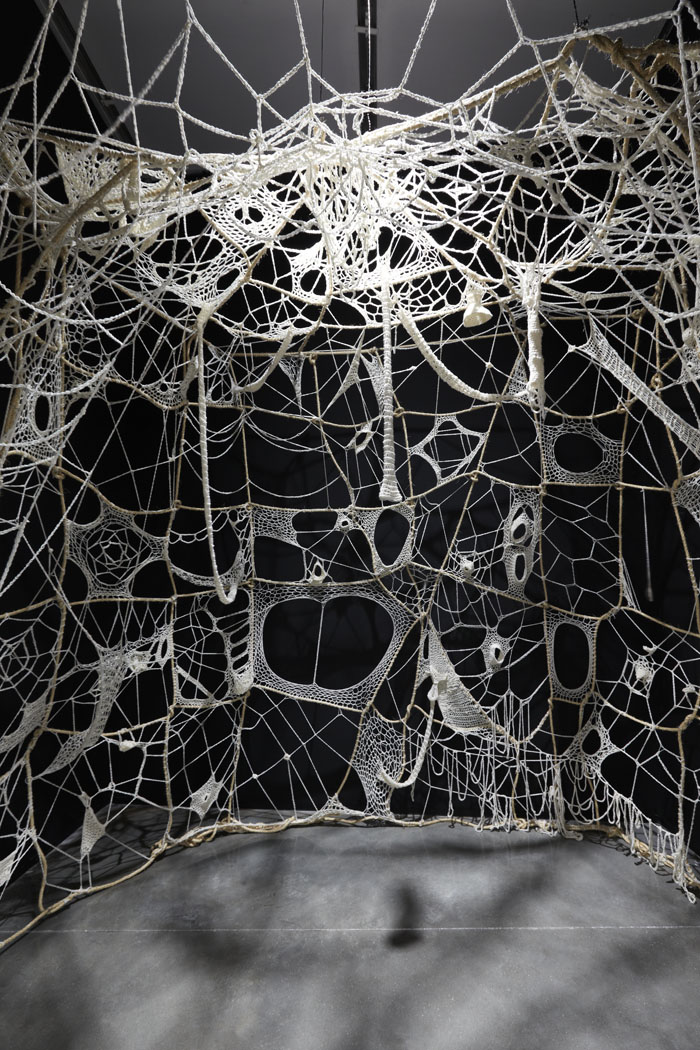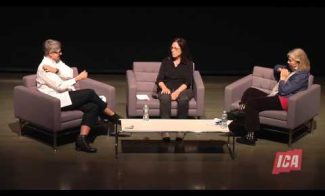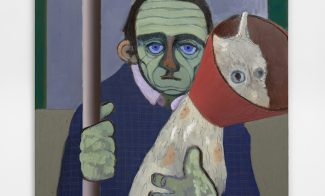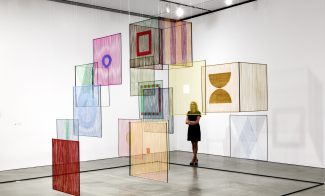Faith Wilding is a multidisciplinary artist whose works often focus on the sociopolitical history of the body. Born in Paraguay, Wilding emigrated to the United States in 1961. Her life and work have been influenced by the political and cultural movements of the 1960s and ’70s. Frequently discussed in relation to feminist art, Wilding’s sculptures can also be seen as an exploration of the expanded possibilities of drawing through her deployment of linear thread.
Crocheted Environment is a sculptural installation referred to as “womb room.” This piece was originally part of the 1972 exhibition Womanhouse, organized by Judy Chicago and Miriam Schapiro, co-founders of the California Institute of the Arts Feminist Art Program. The exhibition was staged in an abandoned mansion in Hollywood and one of the rooms included Wilding’s Crocheted Environment. At the ICA/Boston, the viewer experiences this piece in a small chamber with black walls. Suspended from the ceiling and enveloping the space is a large crocheted, weblike composition. The threads are simultaneously dense and open. Viewers may stand or sit in this enclosure, suggesting contradictory sensations of security, entrapment, serenity, and danger. About this work, the artist says: “Our female ancestors first build themselves and their families round-shaped shelters. These were protective environments, often woven out of grasses, braches, or weeds. I think of my environment as linked in form and feeling with those primitive womb-shelters, but with the added freedom of not being functional.”
Crocheted Environment is an important installation in the ICA’s collection of fiber works, including pieces by artists such as Eva Hesse, Françoise Grossen, and Sheila Hicks, and marks the museum’s commitment to examining the relationships between craft-based media and contemporary art.
2012.20



